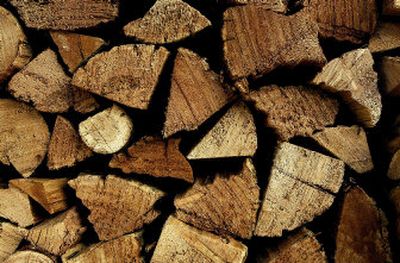Fireside warmth brings benefits

The first dusting of snow in the Spokane area had folks scrambling for missing mittens and digging winter coats from the back of the closet. In the quest to stay warm, electric baseboards are clicking, and gas furnaces blowing, but some residents are simply putting another log on the fire.
For the past 31 years George Wickholm has used wood to heat his own home in Nine Mile, on the shores of Long Lake. He has one wood stove in his home and one in his shop.
For Wickholm wood burning is economical.
“I live on 25 acres,” he said. “One hundred percent of my heat comes from wood.”
Thinning his own pine trees not only gives him free fuel, it improves his property and gives him a healthy workout.
Wickholm is a lieutenant with the Airport Fire Department. He says cutting, stacking and burning wood is a great way to stay in shape for his job.
In addition to the pine on his property, Wickholm makes a trip to the west side of the state to get Douglas fir for the winter as well.
“I like the smell better than pine,” he said. “And fir burns hotter and cleaner.”
Bart Haggin, a retired teacher who lives north of Spokane, also uses wood as the primary source of heat for his home. He has a free-standing wood stove and burns only tamarack, also known as Western larch. According to Haggin, larch has the highest energy content of any of the soft woods, which means one uses less of it.
He uses local suppliers who cut and split the wood for him.
“I love having a fire and watching the flames,” he says. “I think it adds quite a bit to the room.”
Wickholm advises stacking wood indoors. This prevents problems with moisture, mold or bugs.
Haggin stacks his under a carport, close to the house, and keeps it completely covered.
Both men get their wood in the spring so that it’s well cured by winter.
Wickholm uses two to three cords of wood per winter. That’s an average of about 20 hours of labor, but he says it’s worth it.
“As long as I can keep up with it, I’m going to do it.”